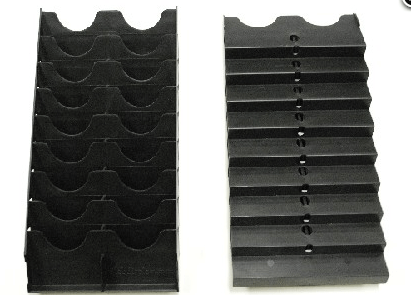November 2, 2023•
Plastic Injection Molding, Plastic part manufacturing•
Bill Hall
In the world of rapid prototyping methods and techniques, there's one clear frontrunner when it comes to efficiency, precision, and cost-effectiveness: injection molding. While 3D printing has its merits, injection molding shines as the preferred choice for prototyping, offering a multitude of advantages that designers and engineers can't afford to ignore.
Injection Molding's Dominance in Prototyping:
Injection molding has established itself as a reliable and indispensable tool in the manufacturing industry. What sets it apart is its ability to not only produce prototypes but to do so with exceptional precision and consistency. A couple of key advantages that make injection molding the preferred choice for prototyping are:
Material Versatility: Injection molding boasts a wide array of materials that are invaluable when prototyping products that require specific material properties, such as strength, flexibility, or heat resistance.
Precision and Tolerance: Injection molding stands out for its unrivaled precision and the ability to achieve tight tolerances. This is critical when creating prototypes that need to closely mirror the final product, ensuring accurate testing and validation.
Cost-Effectiveness for Large Batches: While the initial tooling and setup costs might be higher, injection molding becomes remarkably cost-effective when producing substantial quantities of identical parts to validate designs for mass production.
Speed and Consistency: Once the molds are crafted, the injection molding process is remarkably quick and efficient, churning out multiple identical parts in a matter of seconds. The consistency of the final products is essential for accurate testing and validation.
Injection Molding vs. 3D Printing:
While 3D printing has its place in the world of prototyping, it's important to recognize the limitations that make it a less favorable choice when compared to injection molding such as slower prototyping, design constraints, limited material options, and higher setup costs.
Injection molding takes the lead in the realm of prototyping for its superior material versatility, precision, cost-effectiveness for larger quantities, and the speed and consistency it offers. When selecting the right prototyping method, the choice should align with your project's specific requirements and goals, and for many applications, injection molding proves to be the optimal solution.
Last modified: March 8, 2024



